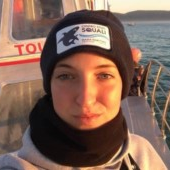Shark Ecology
A special issue of Diversity (ISSN 1424-2818). This special issue belongs to the section "Marine Diversity".
Deadline for manuscript submissions: 31 May 2024 | Viewed by 13980
Special Issue Editors
Interests: elasmobranches; sharks husbandry; sharks behavior; sharks ecology; sharks reproduction; conservation
Special Issue Information
Dear Colleagues,
The Diversity Journal is about to launch a Special Issue dedicated to Shark Ecology.
Sharks are top predators in seas across the world, both in the marine environment and in freshwater, occupying the entire water column, from great depths to shallow waters. They are subject to extreme anthropic pressure which is expressed in fishing, in the action of pollutants and in recent climatic changes, to name only the most evident. Finally, in Panama on November 2022, parties at the 186-nation Convention on International Trade in Endangered Species of Wild Fauna and Flora (Cites), voted to limit or regulate commercial trade in 54 shark species of the Carcharhinidae family, six Sphyrnidae species, etc. It is just as relevant today to share the multidisciplinary skills of different experts to increase society's knowledge and, therefore, the possibilities of conserving this species. Because of this, we kindly invite you to contribute to the Special Issue. We believe that the protection of biodiversity is an issue that cannot be studied as a sectoral problem; however, it can be faced by considering various studies and different approaches in order to successfully manage and develop conservation actions that can produce long-term benefits. This Special Issue is an opportunity to share the most recent studies related to shark ecology and also suggest new paths and research techniques dedicated to this cryptic animal group in order to provide useful ideas for future wide-ranging conservation actions. The Diversity team and we, the Guest Editors, kindly encourage authors to submit specific case studies and multispecific studies or synthesis works and reviews that can expand our knowledge of shark ecology, their threats, and resulting conservation actions. If you are interested in this opportunity or have any questions, please do not hesitate to contact us.
Dr. Primo Micarelli
Dr. Francesca Romana Reinero
Guest Editors
Manuscript Submission Information
Manuscripts should be submitted online at www.mdpi.com by registering and logging in to this website. Once you are registered, click here to go to the submission form. Manuscripts can be submitted until the deadline. All submissions that pass pre-check are peer-reviewed. Accepted papers will be published continuously in the journal (as soon as accepted) and will be listed together on the special issue website. Research articles, review articles as well as short communications are invited. For planned papers, a title and short abstract (about 100 words) can be sent to the Editorial Office for announcement on this website.
Submitted manuscripts should not have been published previously, nor be under consideration for publication elsewhere (except conference proceedings papers). All manuscripts are thoroughly refereed through a single-blind peer-review process. A guide for authors and other relevant information for submission of manuscripts is available on the Instructions for Authors page. Diversity is an international peer-reviewed open access monthly journal published by MDPI.
Please visit the Instructions for Authors page before submitting a manuscript. The Article Processing Charge (APC) for publication in this open access journal is 2600 CHF (Swiss Francs). Submitted papers should be well formatted and use good English. Authors may use MDPI's English editing service prior to publication or during author revisions.
Keywords
- conservation actions
- sharks
- ecology
- monitoring
- threats
- ecotoxicology
- behavior






